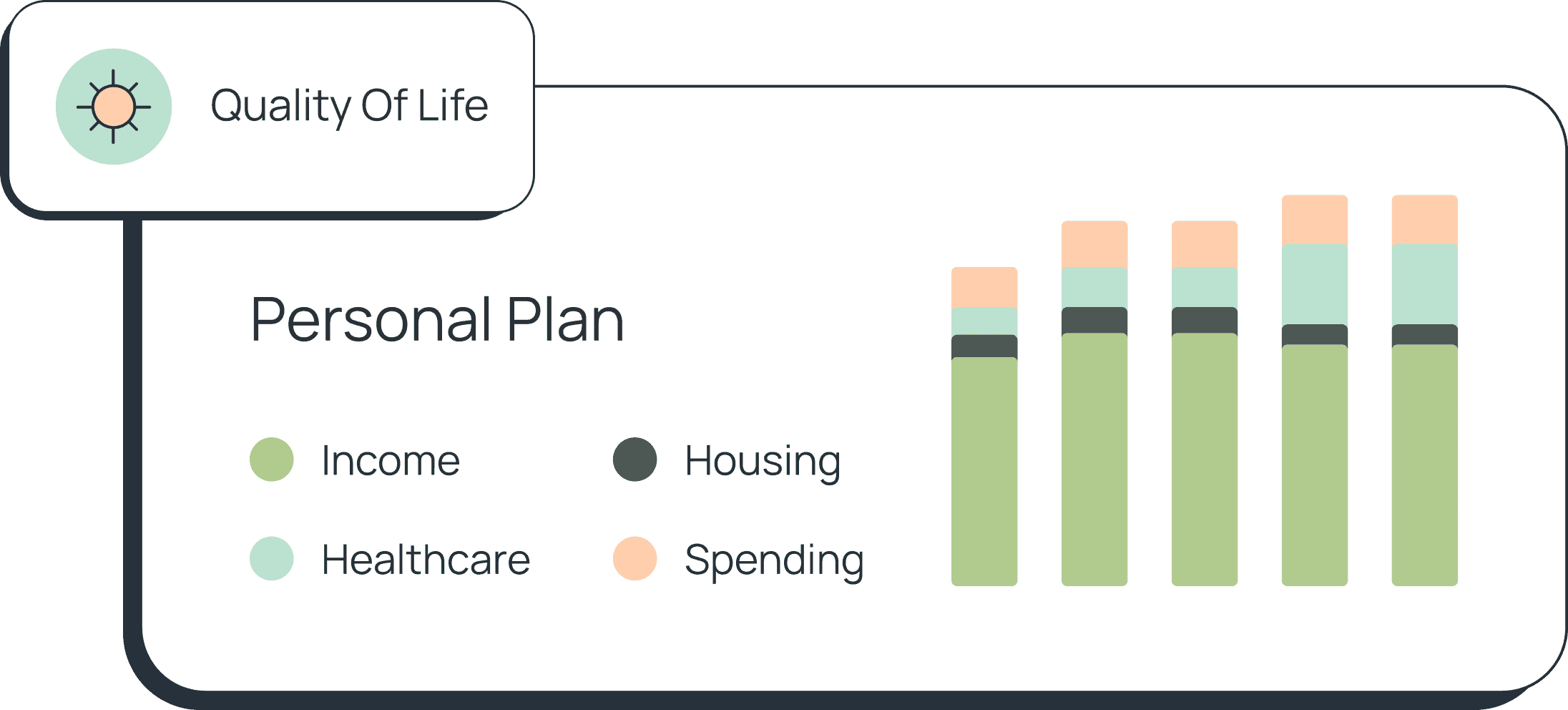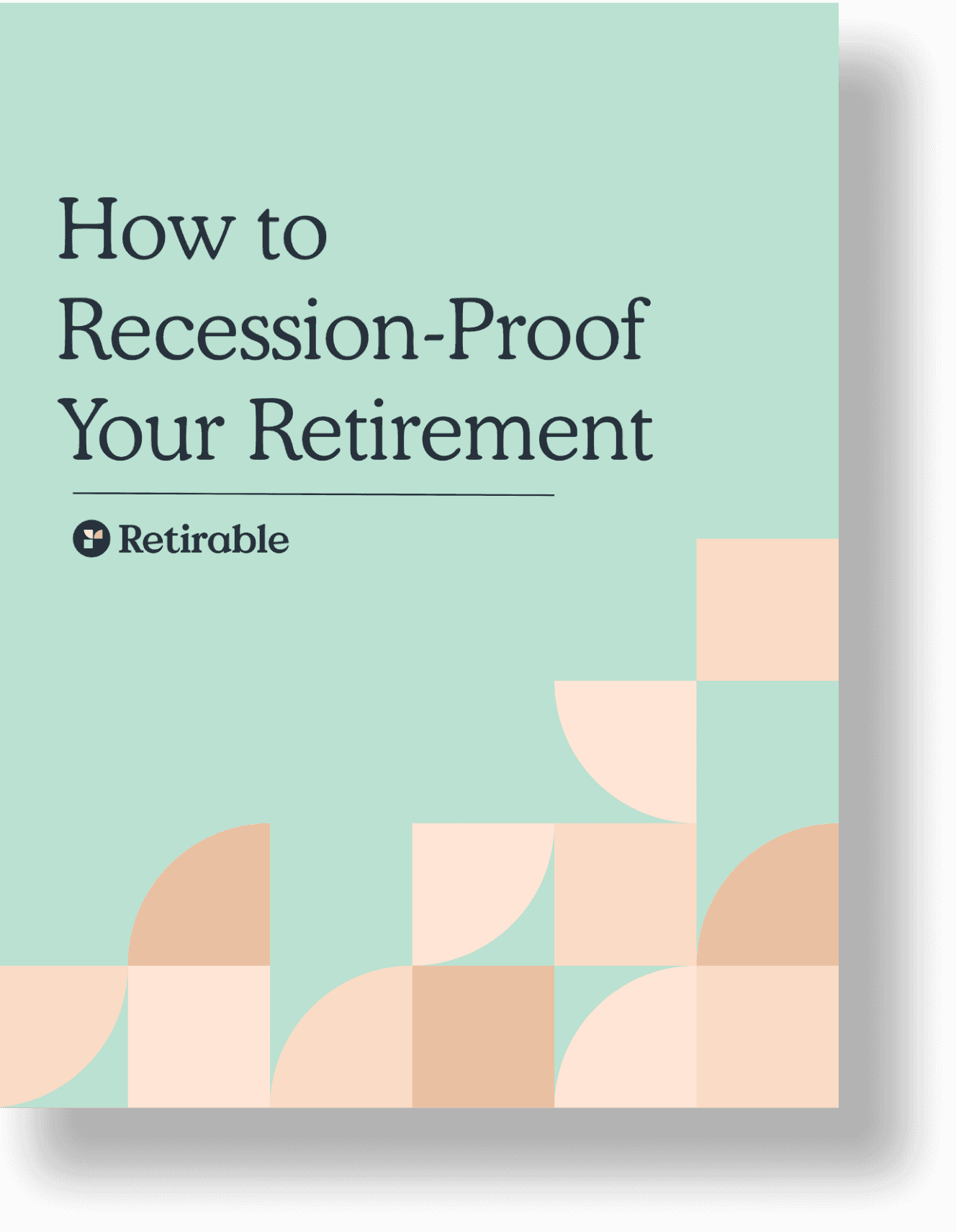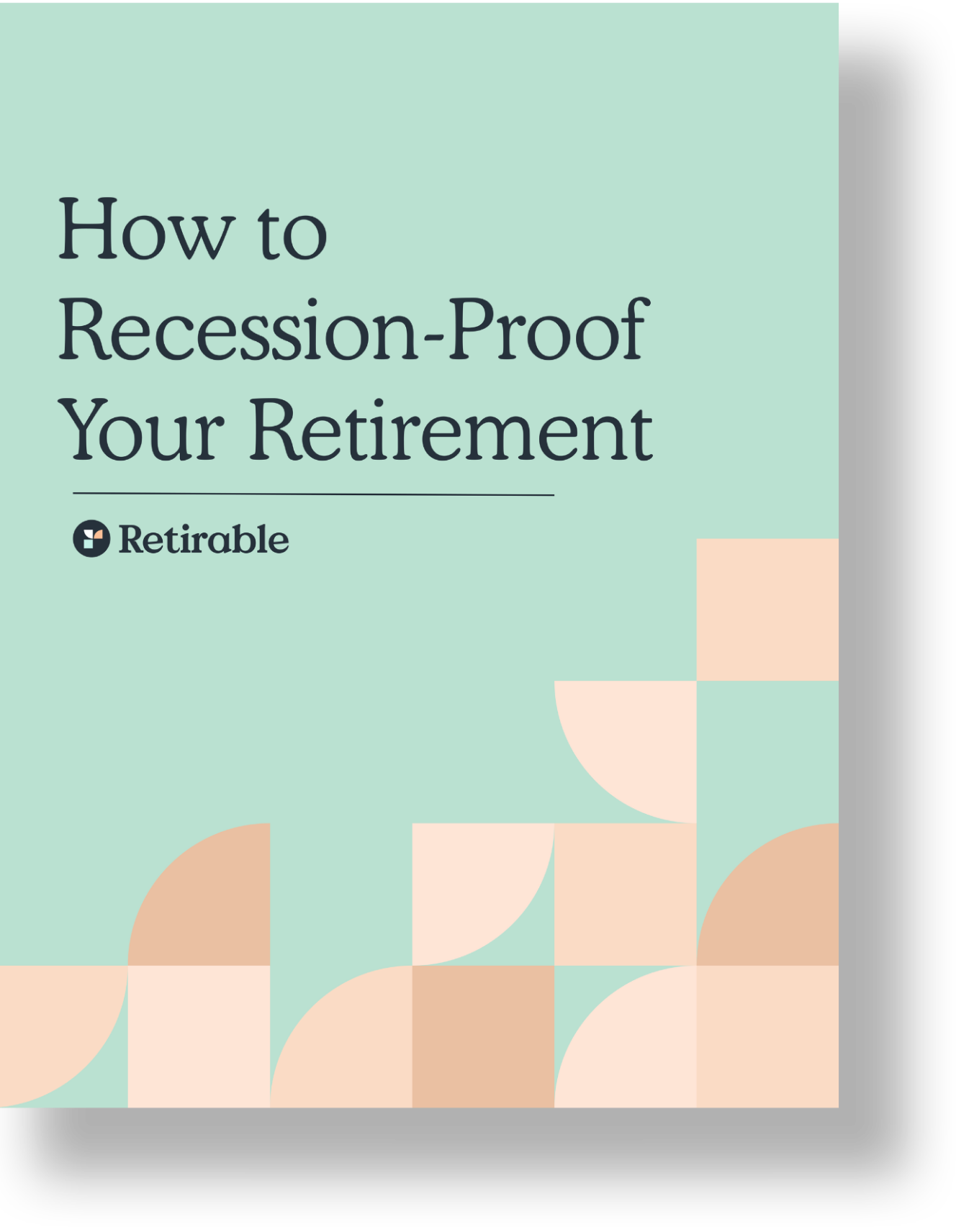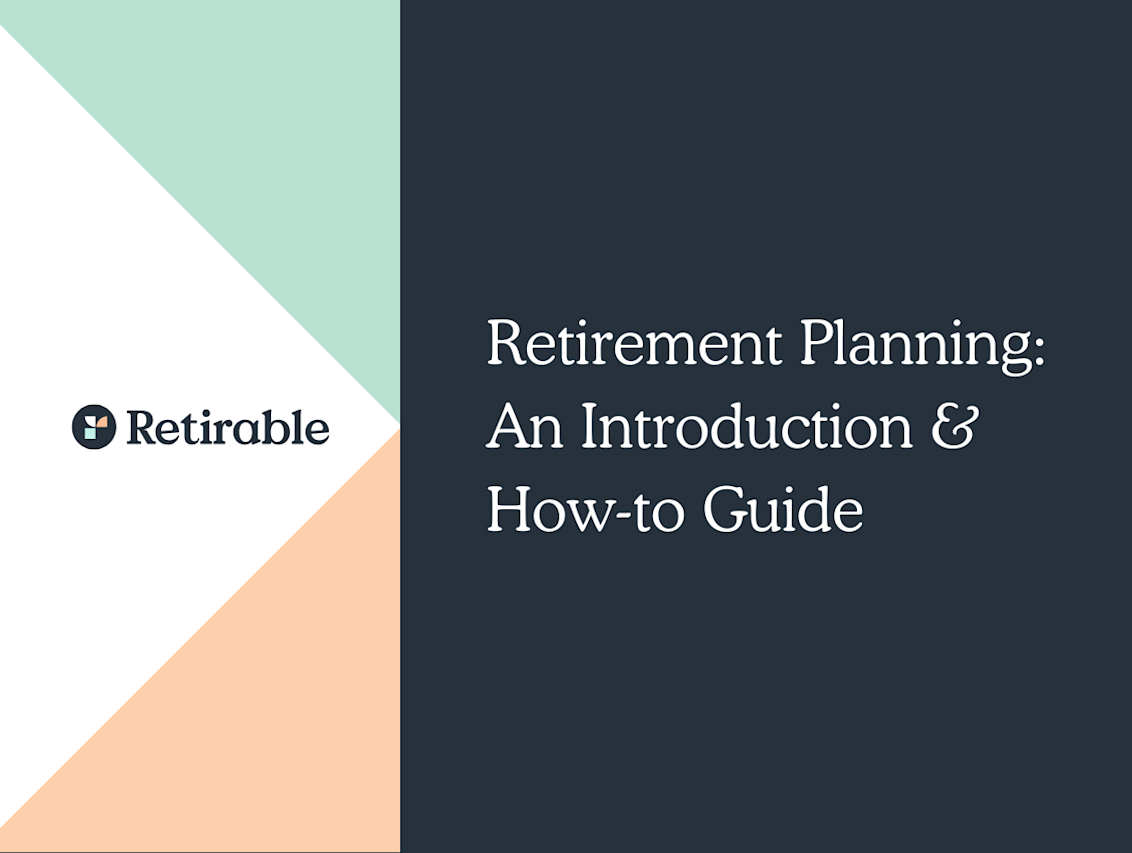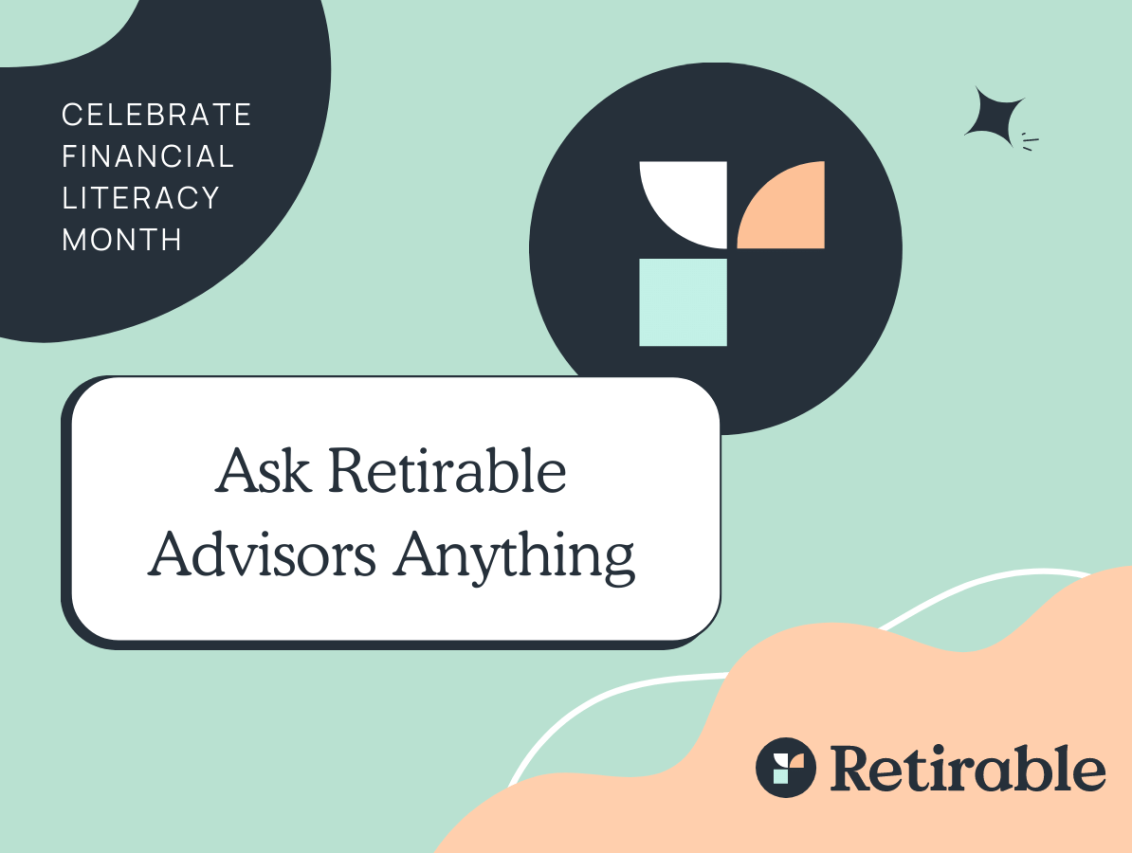Lifestyle
Determining the magic number for your retirement savings goal can be tricky and often stressful. There are many tips and guidelines that experts have shared over the years to help you figure it out, but ultimately the decision will come down to some very personal factors.

C.E Larusso
•
Published May 31st, 2023
Table of Contents
Key Takeaways
Deciding how much money you need to retire comfortably is based on a number of factors, such as your income and retirement lifestyle goals
There are many simplified rules for retirement, with the 4% rule and pacing angle being two of the more popular ones
The best way to know how much you’ll need to retire is to consult a financial advisor
Determining the magic number for your retirement savings goal can be tricky and often stressful. There are many tips and guidelines that experts have shared over the years to help you figure it out, but ultimately the decision will come down to some very personal factors.
- When do you want to retire?
- How much money do you currently have?
- How lavishly do you want to live?
Whether you will be comfortable in a cottage in Maine or are aiming for a beachfront Maui property, use this article as a guide and start mapping out a savings plan to retire comfortably and happily.
Determining When You Want to Retire
Of course, many factors go into choosing the best time to retire, and the state of your savings and finances is likely at the top of your list.
One thing to calculate is your Social Security benefits. While you can begin collecting Social Security as early as age 62, it might be wiser to wait, considering you’ll get much larger payouts if you delay until you turn Full Retirement Age, and even more if you wait until you turn age 70 (though the benefits will stop increasing in amount at that point).
There are a lot of other reasons to wait past the traditional retirement age of 62: if retiring would, for instance, require you to sell your home or change your lifestyle in a major way, you may want to wait a few years until you can bolster your savings more so you can live out your retirement years in comfort. That said, some people prefer to live more leanly to enjoy more years away from work, or choose to collect benefits as soon as possible and work part-time for a few more years.
Ultimately, the right decision for you will come down to some key factors:
- Your financial situation
- Your desired lifestyle in retirement
- Your retirement time horizon
Simplified Rules for Saving for Retirement
The most basic of the rules outlined here is the “pacing rule,” which states that you should have 10-12x of your income saved by the time you retire. That’s a good baseline to have, but there are other retirement savings strategies out there that might be better suited to your situation, and sometimes you need to employ several of them.
The Multiply-By-25 Rule
The multiply-by-25 rule works by trying to determine how much money you will need to live off of in one retirement year, and then multiplying that amount by 25 to get to the amount you need to save. To arrive at your base figure, you should calculate rough costs based on where you want to live, how much you’d like to travel, any possible medical expenses, general cost-of-living and inflation, and any other major considerations. Let’s say that you’ve arrived at $75,000. Once we multiply that by 25, we get to $1,875,000—that’s our savings goal.
Some experts suggest following this rule with the 4% rule, which we describe below—the two, in tandem, are meant to create a plan for you to retire comfortably for 30 years.
The 4% Rule
The 4% rule states that you add up all of your investments and only withdraw 4% from the total during your first year of retirement. In subsequent years, you adjust the percentage or dollar amount to account for inflation. Here’s a sample scenario:
Portfolio worth: $500,000 4% withdrawal (year one): $20,000 2% COLA adjustment for year two: $20,400
There’s a few problems with the 4% rule. For one, it assumes you need the exact same amount of money every year, when it’s entirely possible that you will need some of your savings for occasional large expenditures, such as bucket list vacations or healthcare. It also assumes a 30-year projection, which might be too long or too short, depending on your situation. Finally, it assumes your investments are divided between stocks and bonds equally, which is far from being true for everyone.
The Pacing Angle
The pacing angle is a strategy that suggests you save the equivalent amount of your income times two, three, five, etc., depending on your age. So, for instance, if you make $100,000 and are age 40, you should have 3-4x your salary saved for retirement, or $300,000-$400,000. By the time you are ready to retire, the goal should be to have over 10x your income saved, and ideally closer to 12x.
Seamless Transition
The seamless transition plan helps you map out your retirement spending based on your current income. You can figure out how much you will need in retirement, which most people say is between 70 and 90% of your current income, and then plan to save with that amount in mind, while also factoring in how many more years you plan to live (30 is the safest bet).
Join the Millionaire Club
While your 401(k) savings won’t likely be the only retirement savings you have, if you set a goal to save 1 million dollars in it early in life, you could be well on your way to a retirement that matches—or even exceeds—your financial needs. To get there, you should start putting money into your 401(k) as early as possible, and hitting your contribution limit. Also make sure you are always at least putting in whatever your company matches, as that works out to a free, bonus contribution. The larger the amount you contribute early in life, the more time the money will have to compound, getting you to that $1 million dollar goal.
Using Income to Save for Retirement
Your current income (and spending habits) should give you some insight as to how much you’ll need to retire. Typically, people in retirement use 80-90% of their pre-retirement income, so if you make $100,000 in your working years, you should expect to need $80,000-$90,000 in each of your retirement years, with yearly adjustments for inflation.
Many people plan for Social Security to be their primary source of income in retirement, but while you are in the planning stage, you should consider diversifying your investments, which might include high-yield savings accounts and bonds.
I-bonds, in particular, are rising in popularity due to the rate of inflation jumping in recent years. The current published interest rate, which is a combined rate that factors in inflation, is 6.89%. Bonds are very low-risk investments, and you are guaranteed to not lose money on them as long as you wait until they come to full maturity to cash in.
If you have $22,000 cash on hand to invest in I-bonds today, you could be looking at a return of about $1,500 annually. The same amount, invested in a high-yield savings with a 3.3% return, equals approximately $726 in returns. These numbers obviously only increase the more you have to save alongside the rate of inflation.
Finally, take a look at all your retirement savings plans and review the withdrawal rules. 401(k) plans, for instance, don’t allow you to withdraw without penalty before you turn 59 ½. If you wish to retire before you turn this age, you’ll need to make sure you have alternative income sources lined up—that could be anything from the I-bonds and savings outlined here, but could also include rental properties, the sale of your home, or an inheritance.
In short, there is more than one tool for retirement savings, and the best way to determine how to diversify your money for the best returns is to discuss your goals with a financial advisor.
How to Use a Retirement Calculator to Determine How Much You'll Need
Using Retirable’s retirement calculator, you can determine how much you might need to save for a healthy, stress-free, and fulfilling retirement. To calculate, you’ll need these figures:
- Annual income: The amount of money you currently make
- Number of years until retirement: The number of years left until you plan to retire
- Number of years after retirement: How many years you plan or expect to live after you retire
- Annual inflation: The anticipated inflation rate; during a typical year, you can expect this to be around 2%
- Annual Yield on Balance: The rate of return you expect from your investments
Retirement Planning Questions to Ask a Financial Advisor
Can I retire at 65 without a nest egg?
If you find yourself way behind in the goal that the retirement calculator came up with, or are way closer to zero than $1 million, you can adapt to play catch-up. The first move would be to plan on delaying your retirement age by a few (or several) years, so you have more time to contribute to Social Security and any work-sponsored retirement plans.
In addition, now is the time to reduce or eliminate your debt so you have fewer bills during retirement to worry about. If you’re over 40 and own a home, see if downsizing is an option and would help reduce or eliminate your mortgage.
Finally, retirement is a big change in and of itself, partially because it is often accompanied by a move to a more retirement-friendly state. Some states, such as Florida, Wyoming, and Washington, have no income tax—meaning you can collect all of your retirement income after paying only Federal taxes. This can be an excellent way to make every dollar count and stretch much further.
Should I plan to work in retirement?
Some people choose to continue working in retirement to supplement their income, expand their social circle, and engage in new activities or special projects. Others prefer to fully embrace a life of leisure, dedicating their time to hobbies and travel, with work completely off the table. The decision is ultimately yours and will depend on various factors, including your financial situation, interest in work, health, and other considerations. How much money does the average person need to retire comfortably?
The amount a person needs to retire comfortably depends on many competing individual circumstances. You can start by considering your current income and spending habits—typically, you should anticipate needing 80-90% of your pre-retirement income each year. But it’s important to take a look at your savings as well, as you might not need to spend in the same way during retirement, or will need to allocate funds to different things, such as healthcare. Cost-of-living is another important factor—living in California costs much more than living in Florida, so it’s important to weigh that against your retirement savings goal and where you plan to live out the rest of your life.
Share this advice

A professional content writer, C.E. Larusso has written about all things home, finance, family, and wellness for a variety of publications, including Angi, HomeLight, Noodle, and Mimi. She is based in Los Angeles.
Share this advice

A professional content writer, C.E. Larusso has written about all things home, finance, family, and wellness for a variety of publications, including Angi, HomeLight, Noodle, and Mimi. She is based in Los Angeles.
Free Retirement Consultation
Still have questions about how to properly plan for retirement? Speak with a licensed fiduciary for free.
